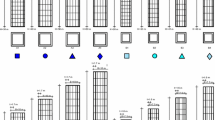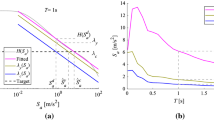The results of development of the normative framework for justifying the residual resource of starting building constructions of space launch vehicles for placing spacecrafts of various purposes into the Earth orbits are presented. Created starting complexes are successfully operated in various countries around the world where space-rocket hardware is well-developed; they represent a set of functionally interconnected mobile and stationary technical objects, control equipment and constructions designed to support and conduct all types of work with start preparation and rockets launching. Their features depend on the type and power of the launch vehicles, infrastructure characteristics (the location of the complex, the nomenclature of space objects, development level in the space-rocket technology area), and tasks which are solved during launching, etc. The solution of various issues, which arise while making the normative framework for justifying the resource of starting complexes, is caused by the need to consider the problems of strength and resource of heterogeneous elements of their designs and space-rocket technology designs. The main methodological stages of resource justification are defined. The limiting resource is considered to be the critical operating time, or the number of cycles (starts) during this time, after which the specified limiting states are reached in the hazardous areas of the structure, such as: critical cracks, fracture, formation of unacceptable plastic deformations, loss of stability, growth of corrosion damages, etc. It is noted that the physical nonlinearity of the material and statistical approaches determine the basis for calculating strength and resource. The classification of loads on the starting complexes is made. The concepts of low- and high-cycle fatigue are used. In developing strength standards and the basis for calculating resource, it is reasonable to use up-to-date methods of technical diagnostics, particularly, methods of holographic interferometry and acoustic emission, and fast-converging schemes of methods for numerical operational calculations.




Similar content being viewed by others
References
A. V. Degtyarev (Ed.), Sixty Years in Rocket Science and Astronautics [in Russian], APT Press, Dnepropetrovsk (2014).
V. S. Hudramovych, V. N. Sirenko, D. V. Klymenko, and Yu. F. Daniev, “Making the methodology of normative fundamentals of resource calculation of starting buildings constructions of a space rocket vehicles,” in: Theory and Practice of Rational Designing, Manufacturing, and Operation of Machine-Building Constructions (Proc. of the VI Int. Sci.-Tech. Conf., Oct. 25–26, 2018, Lviv), KINPATRI Ltd, Lviv (2018), pp. 5–7.
I. V. Barmin (Ed.), Technological Objects of Ground-Based Infrastructure of Rocket and Space Technology [in Russian], Poligrafiks RPK, Moscow (2005–2006).
V. V. Bolotin, Resource of Machines and Structures [in Russian], Mashinostroenie, Moscow (1990).
V. T. Troshchenko (Ed.), Strength of Materials and Structures [in Russian], Academperiodika, Kiev (2005).
A. V. Karmishin, A. I. Likhoded, N. G. Panichkin, and S. A. Sukhinin, Fundamentals of Rocket-Space Structures Development [in Russian], Mashinostroenie, Moscow (2007).
N. A. Makhutov (Ed.), Strength, Resource, Survivability, and Safety of Machines [in Russian], Librokom, Moscow (2008).
V. V. Panasyuk (Ed.), Fracture Mechanics and Strength of Materials [in Ukrainian], in 14 volumes, Academperiodica, Kyiv (2004–2012).
A. J. McEvily, Metal Failures: Mechanisms, Analysis, Preventation, John Wiley & Sons, New York (2002).
A. N. Guz’ (Ed.), Achievements of Mechanics [in Russian], in 6 volumes and 7 books, A.S.K. (vol. 1–3), LITERA (vol. 4–6), Kiev (2005–2011).
Ya. I. Burak and R. M. Kushnir (Eds.), Modeling and Optimization in the Thermomechanics of Electrically Conducting Nonuniform Bodies [in Ukrainian], in 5 volumes, Spolom, Lviv (2006–2011).
Z. T. Nazarchuk (Ed.), Technical Diagnostics of Materials and Structures [in Ukrainian], in 8 volumes, Prostir-M, Lviv (2016–2018).
N. A Makhutov, Yu. G. Matvienko, and A. N. Romanov, Problems of Strength, Technogenic Safety and Structural Material Science [in Russian], URSS, Moscow (2018).
Yu. N. Rabotnov, Creep of Elements of Structures [in Russian], Nauka, Moscow (1966).
V. S. Hudramovich and E. S. Pereverzev, Bearing Ability and Durability of Elements of Constructions [in Russian], Naukova Dumka, Kiev (1981).
V. I. Mossakovskii, V. S. Hudramovich, and E. M. Makeev, Contact Interaction of Elements of Shell Constructions [in Russian], Naukova Dumka, Kiev (1988).
E. S. Pereverzev, Yu. F. Daniev, and G. P. Fillet, Random Signals in Problems of Estimation of the Condition of Technical Systems [in Russian], Naukova Dumka, Kiev (1992).
A. A. Il’yushin, Works: 1946–1966 [in Russian], in 4 volumes, Vol. 2: Plasticity, Fizmatlit, Moscow (2004).
V. S. Hudramovich, Theory of Creep and Its Applications to the Calculation of Elements of Constructions [in Russian], Naukova Dumka, Kiev (2005).
A. N. Petrenko (Ed.), Yu. F. Daniev, A. V. Demchenko, et al., Space Aircraft. Introduction to Space Technology [in Russian], ART-Press, Dnepropetrovsk (2007).
V. S. Hudramovych, “Contact mechanics of shell structures under local loading,” Int. Appl. Mech., 45, No. 7, 708–729 (2009).
A. V. Degtyarev, O. V. Pilipenko, V. S. Gudramovich, et al., “On classification of launch equipment of rocket and space complexes at justification of strength standards,” Kosm. Nauka Tekhnol., 22, No. 1, 3–13 (2016).
M. D. Mesaroviã, D. Macko, and Y. Takahara, Theory of Hierarchical, Multilevel, Systems, Academic Press, New York–London (1970).
M. A. Krasnosel’skii, G. M. Vainikko, P. P. Zabreiko, et al., Approximate Solution of Operator Equations [in Russian], Nauka, Moscow (1969).
V. S. Hudramovich, E. L. Hart, and S. A. Ryabokon’, “Plastic deformation of nonhomogeneous plates,” J. Math. Eng., 78, No. 1, 181–197 (2013).
Z. T. Nazarchuk (Ed.), V. S. Hudramovych, V. R. Skal’s’kyi, and Yu. M. Selivanov, Holographic and Acoustic-Emission Diagnostics of Heterogeneous Constructions and Materials [in Ukrainian], Prostir-M, Lviv (2017).
V. S. Hudramovich, D. V. Klimenko, and E. L. Hart, “Influence of cuts on the strength of cylindrical compartments of launch vehicles with inelastic material deformation,” Kosm. Nauka Tekhnol., 23, No. 6, 12–20 (2017).
E. L. Hart and V. S. Hudramovich, “Projection-iterative modification of the method of local variations for problems with a quadratic functional,” J. Appl. Math. Mech., 80, No. 2, 156–163 (2016).
A. A. Lebedev (Ed.), Mechanical Properties of Structural Materials in a Complex Stress State [in Russian], InYure, Kiev (2003).
V. T. Troshchenko and L. A. Khamaza, “Conditions for the transition from nonlocalized to localized damage in metals and alloys. Part 3. Determination of the transition conditions by the analysis of crack propagation kinetics,” Strength Mater., 46, No. 5, 583–594 (2014).
V. T. Troshchenko and L. A. Sosnovskii, Fatigue Resistance of Metals and Alloys [in Russian], in 2 volumes, Naukova Dumka, Kiev (1987).
V. I. Dobrovol’skii and S. V. Dobrovol’skii, Deformation Methods for Evaluating Low-Cycle Strength [in Russian], IzhGTU, Izhevsk (2005).
S. S. Manson and G. R. Halford, Fatigue and Durability of Structural Materials, ASM International, Materials Park, OH (2006).
I. A. Birger, B. F. Shorr, and G. B. Iosilevich, Calculation of the Strength of Machine Parts [in Russian], Mashinostroenie, Moscow (1993).
G. A. Bigus and Yu. F. Daniev, Technical Diagnostics of Hazardous Production Facilities [in Russian], Nauka, Moscow (2010).
G. S. Pisarenko and V. A. Strizalo, Experimental Methods of Mechanics of a Deformable Solid Body [in Russian], Naukova Dumka, Kiev (2018).
G. A. Bigus, Yu. F. Daniev, N. A. Bystrov, and D. I. Galkin, Fundamentals of Diagnostics of Technical Devices and Structures [in Russian], MVTU, Moscow (2018).
Author information
Authors and Affiliations
Corresponding author
Additional information
Translated from Problemy Prochnosti, No. 3, pp. 13 – 21, May – June, 2019.
Rights and permissions
About this article
Cite this article
Hudramovich, V.S., Sirenko, V.N., Klimenko, D.V. et al. Development of the Normative Framework Methodology for Justifying the Residual Resource of Starting Buildings’ Constructions of Space Launch Vehicles. Strength Mater 51, 333–340 (2019). https://doi.org/10.1007/s11223-019-00079-4
Received:
Published:
Issue Date:
DOI: https://doi.org/10.1007/s11223-019-00079-4




